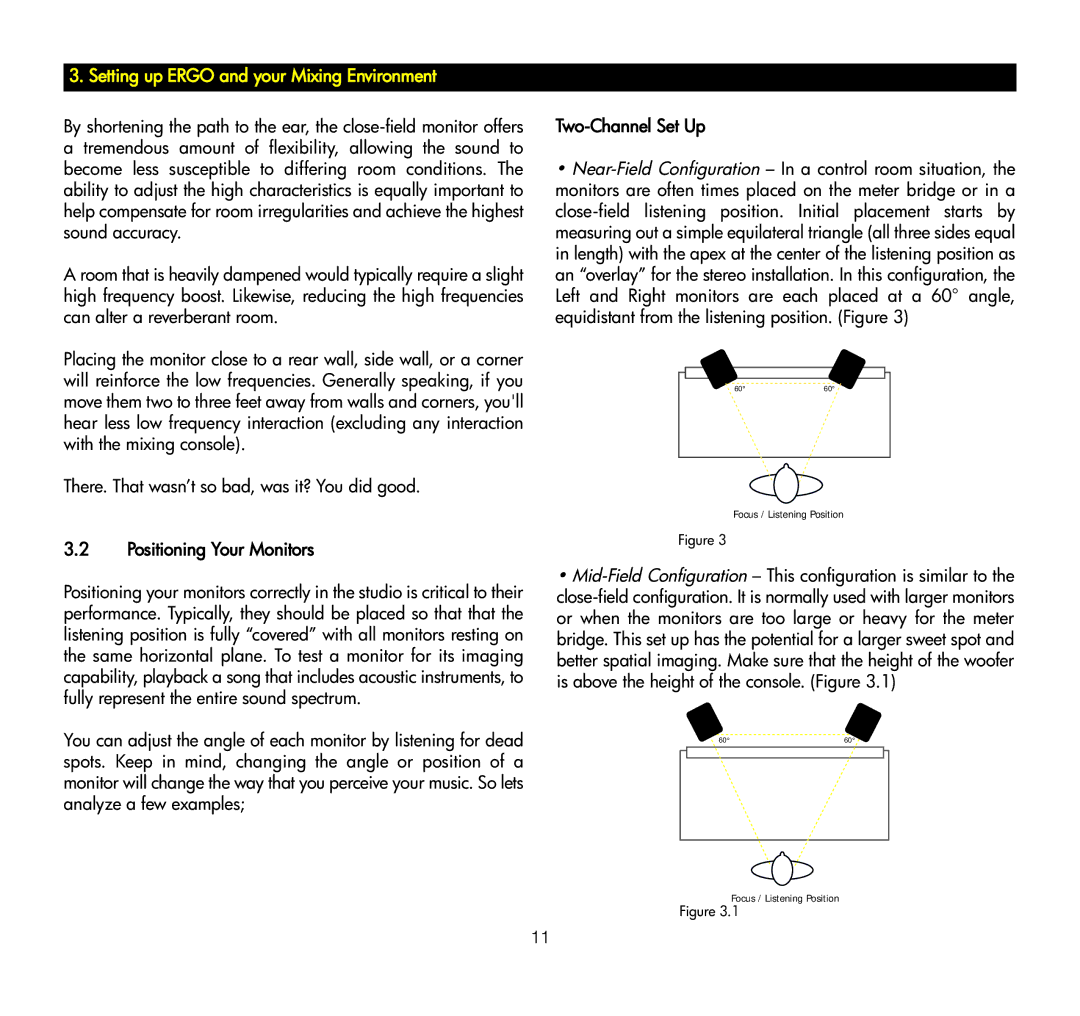
3. Setting up ERGO and your Mixing Environment
By shortening the path to the ear, the
A room that is heavily dampened would typically require a slight high frequency boost. Likewise, reducing the high frequencies can alter a reverberant room.
Placing the monitor close to a rear wall, side wall, or a corner will reinforce the low frequencies. Generally speaking, if you move them two to three feet away from walls and corners, you'll hear less low frequency interaction (excluding any interaction with the mixing console).
There. That wasn’t so bad, was it? You did good.
3.2Positioning Your Monitors
Positioning your monitors correctly in the studio is critical to their performance. Typically, they should be placed so that that the listening position is fully “covered” with all monitors resting on the same horizontal plane. To test a monitor for its imaging capability, playback a song that includes acoustic instruments, to fully represent the entire sound spectrum.
You can adjust the angle of each monitor by listening for dead spots. Keep in mind, changing the angle or position of a monitor will change the way that you perceive your music. So lets analyze a few examples;
•
60°60°
Figure 3
•
60° | 60° |
Figure 3.Focus1 / Listening Position
11
